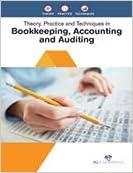Question
According to the CANADIAN Taxation Laws Jane acquired a house in 2015 for $300,000. In 2017, she acquired a cottage $150,000. She lived in the
According to the CANADIAN Taxation Laws
Jane acquired a house in 2015 for $300,000. In 2017, she acquired a cottage $150,000. She lived in the house in the winter and in the cottage in the summer.
In 2019, she sold both properties. She received $420,000 for the house and $250,000 for the cottage.
A. What is the gain on the house without considering the principal residence exception formula?
B. What is the gain on the cottage without considering the principal residence exception formula?
Considering the tax planning opportunity that the principal residence exemption provides the individual taxpayer. Remember, the goal is to minimize taxes payable for the current tax year.
Determine for which years should Jane designate the house or designate the cottage as her principal residence?
C. Janes designated principal residence en 2015 is house or cottage?
D. Janes designated principal residence en 2016 is house or cottage?
E. Janes designated principal residence en 2017 is house or cottage?
F. Janes designated principal residence en 2018 is house or cottage?
G. Janes designated principal residence en 2019 is house or cottage?
H. Determine the minimum taxable capital gain to be reported by Jane on the sale of the two properties?
Step by Step Solution
There are 3 Steps involved in it
Step: 1

Get Instant Access to Expert-Tailored Solutions
See step-by-step solutions with expert insights and AI powered tools for academic success
Step: 2

Step: 3

Ace Your Homework with AI
Get the answers you need in no time with our AI-driven, step-by-step assistance
Get Started


